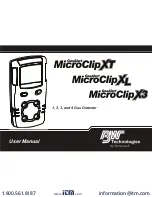
4. How to Use
4-5. How to Tube
- 23 -
4-5. How to Tube
The gas detector has a Rc1/4 thread inside the sampling inlet/outlet (GAS IN, GAS OUT), to which
“
polypropylene
”
unions are normally attached. Because their material varies depending on the gas to be
used, please specify the gas.
The compatible tube is a Teflon tube of
Φ
6 (OD) -
Φ
4 (ID). The tube must be installed with the supplied
ferrules and sleeves attached to prevent a leak.
When the tube is cut, its cut point has a smaller inner diameter. Use a file etc. to expand the inner diameter
of the cut point. To remove cut-dust or other materials remaining inside of the tube, never fail to blow
compressed air into the tube before connecting it to the gas detector.
Some sample gases have highly adsorptive or corrosive property. Select the tube material taking into
account of these precautions.
The flow rate of the gas detector itself is approximately 0.5 L/min under the operating temperatures. When a
gas is drawn from a distant point, please consult us on the tube length.
Union
Ferrule
Sleeve
Tube
WARNING
The gas detector is designed to draw gases under the atmospheric pressure.
If excessive pressure is applied to the sampling inlet and outlet (GAS IN, GAS OUT) of the gas
detector, detected gases may be leaked from its inside, thus leading to dangers. Be sure that
excessive pressure is not applied to the gas detector while used.
Detected gases must be exhausted from the detected gas exhausting outlet (GAS OUT) on the back
of the gas detector to which an exhaust tube is connected, to a point regarded as a safe place.
CAUTION
The longer the GAS IN tube is, the longer it takes for a gas to reach the gas detector. Because
some gases have a highly adsorptive property for the tube, resulting in a slow response and a
lower reading than the actual value, the length of the GAS IN tube must be minimized.
When the humidity in the sampling point is high, condensation may be formed inside of the tube.
Make sure to avoid condensation when using a gas which is dissolved into water and corrodes
contacted materials, such as a strong acid gas, because it may disable the gas detector for
detecting gas and furthermore may corrode internal parts. Also avoid an excessive U-shaped or
V-shaped tube piping.
Determine the inlet for the sample gas, considering the airflow of the sample gas line and the gas
generating process.
Never fail to attach the supplied filter in the middle of the tube.
It is needed to decide the length and material of the tube. Please contact RIKEN KEIKI for more
information.
Содержание TP-70DGII
Страница 1: ...PT5E 0581 Gas Detector TP 70DGII Operating Manual...
Страница 83: ...11 Definition of Terms 82...
















































